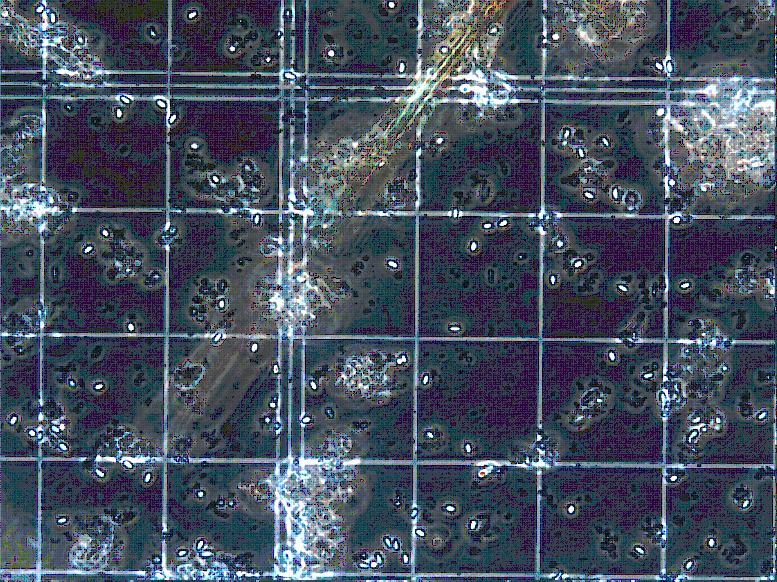I ended my day last Thursday by using a hive tool to break into a fresh coconut with Lauren Rusert on the Hawaiian island of Kauai. From December 4-18, I was in Hawaii working with the queen breeders to introduce them to the BIP program. Lauren and her boss Danielle Downey run an apiary program for the beekeepers across the Hawaiian Islands. They run tests for beekeepers, certify for shipping queens, teach classes, take samples for the National Survey, monitor for swarms, along with a host of other tasks. The program has been in operation for just over a year, and they have really established…
The Cost of Freedom
Rob and I tore this hive apart today to have a look at what was going on inside. If you listen closely you may be able to catch parts of our conversation. The video tells the story of these bees and its struggle to survive...It can be viewed at the link below: http://www.youtube.com/watch?v=wdSnVxtQSUo
Entrance Reducers
What is the purpose of an entrance reducer? Entrance reducers can be used for different things at different times of the year. Entrance reducers are most commonly used in the fall when forage becomes limited and bee traffic slows down. It is also important to seal up any other holes in the colony around this time of the year to prevent robbing or access for pests. Beekeepers will decrease the size of hive entrances to limit the space that the bees have to protect. They also change the temperature and ventilation unless using screen bottom boards. Reducers can keep unwanted pest like chipmunks and mice…
How to store soft bodied insects
In my last blog I explained how to pin and label bees. In this blog I am going to talk about another way to store and preserve soft bodied insects or larvae. This is particularly useful when you want to store the larvae or pupae of bees. There is an image above of different bee caste I found in clay soil over the summer of 2010. For larvae, I like to use Pampel’s solution, a general purpose preservative. Two other common fixatives are KAAD larval fixative and Peterson’s solution. They are available from Bioquip.com. These are a bit more expensive than what we store common…
Tying Knots
Knots can be an important part of keeping bees, which is kind of unfortunate for me since I really struggle with both learning and remembering how to tie different types of knots. One beekeeper we went to had issues in the past with lids flying off die to wind. Their solution was to use rope to keeps the lids down and protecting the inside of the colonies, so we had to learn how to tie the knots to properly close up the colonies after sampling. I took a few pictures to help me remember. The ropes are long enough to reach under the pallet the…
Nosema in the Lab
Looking into the eyepiece of my microscope at the water-mount slides I have prepared, hardly anything I see resembles honey bees. Coincidentally, everything appears a monochromatic amber-gold very close to the color scheme of the inside of a hive. But that is really where the similarity stops. Instead of seeing a humming colony of busy, hard-working bees, my eyes sift through a collection of stationary debris, microbes, and pollen. I am Anna Wallis and I work with Heather Eversole in a lab processing samples taken from hives from all over the United States for honeybee diseases. I am a part of the fantastic team at…
What’s Happening…
Last week Rob, Katie, and I traveled to Rohnert Park, CA for the California State Beekeepers Association Convention. The three of us presented Tuesday morning, introducing our work with California bee breeders. There were many good speakers at the convention whose work and presentations helped to spark conversation in the hallway. The fun part, for me, was being able to interact with many beekeepers and scientists who had come to discuss anything and everything pertaining to bees. This week we had some friends from the Hawaii Department of Agriculture visit. Apiculture Specialist Danielle Downey and Technician Lauren Rusert crossed the Pacific to have a look…
The Promised Land 2: the airing
This week on National Public Radio, the Public Media program The Promised Land broadcasted the story on Marla I wrote about previously. It is a pretty good listen. Marla talks about how she got into bees, propolis, the Bee Squad for small time beekeepers, about the Bee Tech-Team we do, among other things. One of the beekeepers we work with, Bob Koehnen was interviewed and you can hear him talk about his operation. You can also hear me maniacally laugh in the background. Give it a listen! http://www.thepromisedland.org/episode/15-marla-spivak
Beekeeping Video Game to Identify Brood Stages
OK, so maybe its not technically a video game, but Reed Johnson at Ohio State has developed an online program called Broodmapper.com to inspect brood frames. Citizen science is a term used describe similar projects, where the general public participates in the collection and analysis of data. Often the tasks include an educational component. In Broodmapper.com, you can learn or hone your skills in identifying eggs, brood age, diseased larvae, and other states you are likely to need to know when inspecting honey bee colonies. Once you complete a tutorial that shows you how to do these things, you can then apply your skills to…
How to Pin Bees
In prior blogs, I talked about methods of collecting bees from nets to bowl traps. I am now going to talk about the process of pinning the insects that have been collected. If the collected bees are frozen, put them on a paper towel or tissue to dry for 10 minutes or so. I will usually gently role them in a tissue to remove any excess condensation from thawing. A picture below shows some bees on a paper towel thawing out. If the bees are from a bowl trap or collected and stored in alcohol, follow steps from my bowl collecting blog to dry the…

